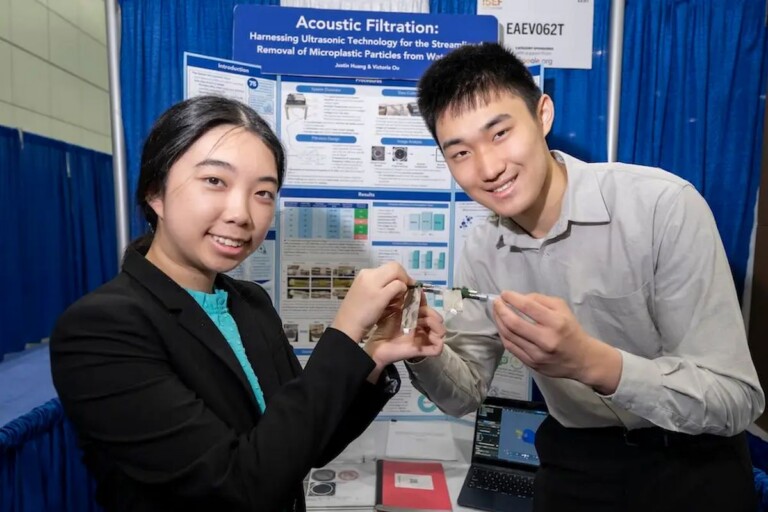Teenagers triumph at $50k with device that removes micro plastics using ultrasound waves
2 min read
Justin-Huang-and-Victoria-Ou with their invention
Two high school students from Woodlands, Texas – Justin Huang and Victoria Ou, have come up with a revolutionary water purifier which uses ultrasonic sound waves as a means to clear microplastic particles out of water. A striking feature is that their state-of-the-art device is no larger than a pen but offers an impressive performance in trapping 84-94% of the microplastic impurity during single-pass laboratory tests.
Microplastics are a significant environmental concern affecting ecosystems all the way from mountaintops to the deepest sea trenches. These tiny plastic particles have even been found in human organs and pose potential risks for health. Huang and Ou’s invention therefore has great potential as an approach towards dealing with this extensive pollution.
The teenagers’ invention operates by transmitting high frequency sound frequencies via water; these acoustic waves generate forces which repel microplastic particles away from the outflow point of water. Their device is better than previous attempts at using ultrasound waves to achieve such ends through higher levels of filtration efficiencies.
They won the Gordon E. Moore Award for Positive Outcomes for Future Generations, which came with a $50,000 cash prize. This took place at the Regeneron International Science and Engineering Fair (ISEF) in Los Angeles where Huang and Ou displayed their invention.
However, inventors believe that there is always room for improvement. For instance, Huang noted that with more professional equipment and lab facilities at their disposal they would be able to further refine their device as well as prepare it for large-scale manufacturing.
They thought of this invention after visiting local wastewater and sewage treatment plants and discovered that there were no regulations or efficient ways to get rid of microplastics from water. The students think that their technology could be used in industrial textile factories, rural water sources, as well as wastewater treatment plants among others. On a smaller scale, household appliances such as washing machines or even fish tanks can use it to eliminate microplastic pollution.
Moreover, besides offering hope towards an ecological issue of concern; it also shows how young people can contribute to important scientific discoveries.





